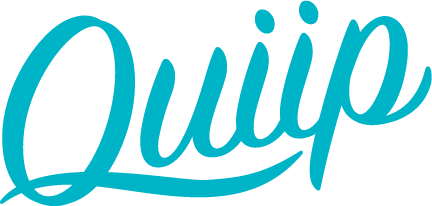Social media live at events part 1: before
Live streams of social media content are a popular addition to events, raising the visibility of your social channels and encouraging attendees to participate online. What should you consider when incorporating a social media content feed into your event?
This is the first post in a series, and looks at pre-event considerations to get you off to a good start. Keep an eye out for the ‘during’ and ‘after’ installments!
Where and how will it be seen?
At some events, people will be on their mobile devices constantly and the primary place for viewing content will be right in their social media apps. Other events might not involve quite as much screen time, so public displays (screens, projections, interactive billboards) will be your best option. This article focuses on the latter with some things to sort out before the event in order to get the most from your social content stream.
There are now dozens of streaming tools available, all offering slightly different features. Test out a few to find one that you like: Twitterfall, Twitter Fontana and Visible Tweets are all popular free tools for Twitter, while sites like ActivityWalls and Wall of Social will also include Instagram content.
Consider how the event stream will be displayed. Text posts work well in Q&A style ticker feeds running across the bottom of a screen so that format is great for tweets. If you have full-screen capabilities, images are good, but short videos are even better at catching attention across a crowded venue.
If you switch between the two, be wary of content that doesn’t work as well in one of the formats. Tckers are likely to show URLs in place of images, and full-screen posts of a single Instagram hashtag won’t be very interesting until the image loads. If you plan to use both formats, see if your display software can generate two different content feeds.
Choose your hashtag
It’s not rocket science, but there are some easy mistakes to watch out for.
- Keep it short. Particularly for Twitter, any excess characters will get in the way of the real content.
- Keep it recognisable. If the event has a name that’s different to the hashtag, think carefully about using it. You’ll lose a lot of potential users to #eventname instead of #ourintendedhashtag.
- Check it’s not already in use! Check well in advance, and then go back and check again close to the event, in case someone has started using it in the meantime. Having people talking about different events in the same channel is confusing.
- Consider various interpretations. Remember #susanalbumparty? Finding out that your conference acronym is used as a derogatory term in Portuguese is embarrassing.
- Promote it everywhere. Some of the audience will want to post Instagram or Twitter content during the event, and just need to know where the discussion is happening. Other people might need a bit of prompting to start looking at or posting to it. Once chosen, get that hashtag everywhere: print it in the programs, put it on posters, get the MC to announce it during a break.
What’s your moderation strategy?
If you don’t have a moderation strategy in place, it’s time to create one. Will it be a high-intensity event during a conference or festival? Is it a longer campaign, on public display for weeks or months? Consider how quickly new posts will be made, what people will post about, and how you’ll respond. You won’t have any control over content posted to a hashtag on Instagram or Twitter, but you may need a display tool that includes moderation functionality.
Paid tools like Stackla and TweetWall Pro, TweetBeam and LiveTweetApp all include more robust moderation functionality. Ideally, you need a few key things: a moderation queue, a way to tag different types of content, and an easy way to find (and un-publish) any content that might have slipped through the net. Tweetwall Pro is noteworthy here for how it handles high-volume moderation, automatically dividing up incoming content if you have multiple moderators online.
Automated language filters can help as a first pass, filtering posts with obvious issues. If you haven’t already done so, search for a sample banlist and adjust to suit your organisation’s needs. Bonus marks if you can read an excerpt to your manager with a straight face. Beyond simple swear words, this is a good way of flagging content that has particular risk for your organisation: PR ‘hot topics,’ brand hijacking and any issue currently before the courts will all have specific language associated with them, and you want need these automatically hidden.
Don’t rely solely on a filter, though. Context is still vitally important, and that’s where community managers and moderators shine – helping to pick up on tone, reading between the lines.
Set up your analytics
Once you’ve decided where the conversation will take place, make sure you are set up to monitor it effectively. Tools like Talkwalker, Tagboard and TweetReach all offer different ways of tracking and analysing hashtag content.
Whichever tools you choose, start monitoring the event hashtags beforehand. That will ensure that you have access to all comments posted during the event. If you need really detailed monitoring and analytics, talk to us about getting a Quiillion report for your event – quickly and easily pulling together some deep-dive insights, using some of the best tools available.
That’s it for our pre-event rundown. Keep an eye out for Part 2: during the event, for some tips on managing some of the issues that might arise despite your best efforts to prepare for them.
